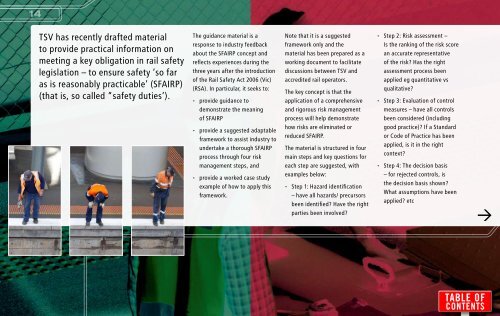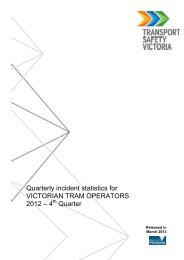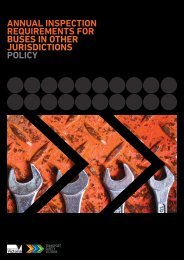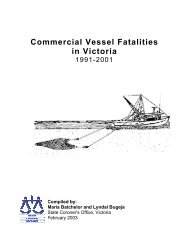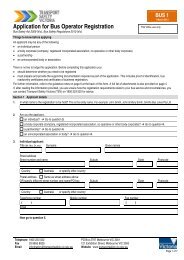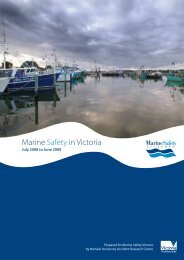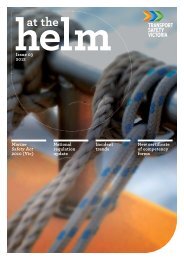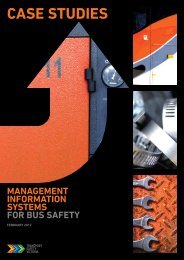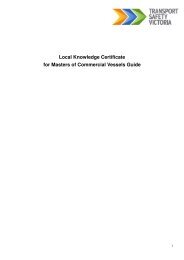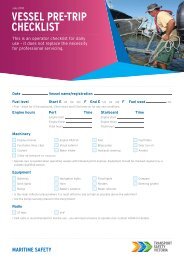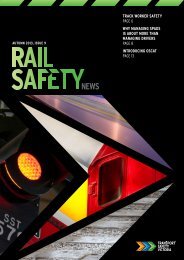Rail Safety News - Issue 5 - May 2011 - Transport Safety Victoria
Rail Safety News - Issue 5 - May 2011 - Transport Safety Victoria
Rail Safety News - Issue 5 - May 2011 - Transport Safety Victoria
You also want an ePaper? Increase the reach of your titles
YUMPU automatically turns print PDFs into web optimized ePapers that Google loves.
14<br />
TSV has recently drafted material<br />
to provide practical information on<br />
meeting a key obligation in rail safety<br />
legislation – to ensure safety ‘so far<br />
as is reasonably practicable’ (SFAIRP)<br />
(that is, so called “safety duties’).<br />
The guidance material is a<br />
response to industry feedback<br />
about the SFAIRP concept and<br />
reflects experiences during the<br />
three years after the introduction<br />
of the <strong>Rail</strong> <strong>Safety</strong> Act 2006 (Vic)<br />
(RSA). In particular, it seeks to:<br />
• provide guidance to<br />
Note that it is a suggested<br />
framework only and the<br />
material has been prepared as a<br />
working document to facilitate<br />
discussions between TSV and<br />
accredited rail operators.<br />
The key concept is that the<br />
application of a comprehensive<br />
• Step 2: Risk assessment –<br />
Is the ranking of the risk score<br />
an accurate representative<br />
of the risk? Has the right<br />
assessment process been<br />
applied eg quantitative vs<br />
qualitative?<br />
• Step 3: Evaluation of control<br />
demonstrate the meaning<br />
and rigorous risk management<br />
measures – have all controls<br />
of SFAIRP<br />
process will help demonstrate<br />
been considered (including<br />
• provide a suggested adaptable<br />
framework to assist industry to<br />
undertake a thorough SFAIRP<br />
process through four risk<br />
how risks are eliminated or<br />
reduced SFAIRP.<br />
The material is structured in four<br />
main steps and key questions for<br />
good practice)? If a Standard<br />
or Code of Practice has been<br />
applied, is it in the right<br />
context?<br />
management steps, and<br />
each step are suggested, with<br />
• Step 4: The decision basis<br />
• provide a worked case study<br />
example of how to apply this<br />
framework.<br />
examples below:<br />
• Step 1: Hazard identification<br />
– have all hazards/ precursors<br />
been identified? Have the right<br />
parties been involved?<br />
– for rejected controls, is<br />
the decision basis shown?<br />
What assumptions have been<br />
applied? etc<br />
><br />
TABLE OF<br />
CONTENTS


